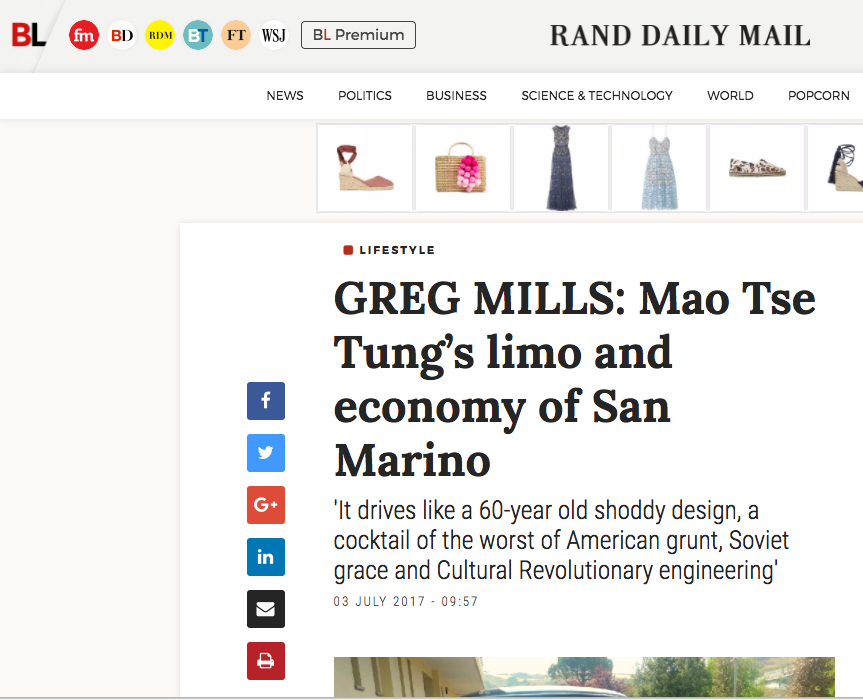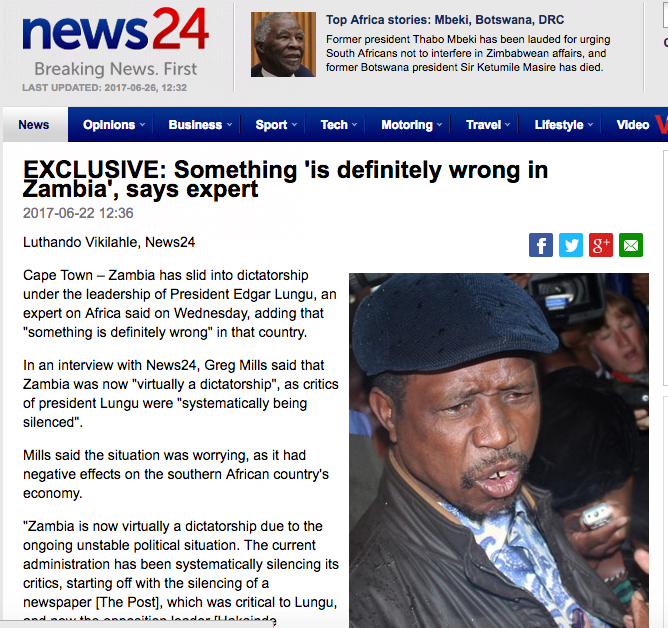News
Mao Tse Tung's limo and economy of San Marino
xxx

The sign on the boot reads HONGQI. The stretched four-door, seven-litre V8 black sedan with its rear-hinged ‘suicide’ doors and fan-styled grille was built in 1968, though it looks older. Its engineering is rough and inadequate, from the hewn wooden dashboard to the poorly upholstered velvet seats, the armour plating a thick concrete looking gunge between the doors. It smells of mould and starts up with a rough, uneven snarl.
‘Madonna’ exclaims its owner when asked about the fuel consumption of the Hongqi CA72: ‘1.5kms per litre’ he whimpers.
But, it’s an icon, a piece of motoring and political history. As the two red and yellow pennants on the front wings indicate, it was once one of Mao Tse Tung’s personal ‘protocol’ vehicles.
The office of Gianfranco Terenzi, the four time president – locally known as a ‘Captain Regent’ – of the Republic of San Marino, is festooned with political memorabilia. The photos on the wall concentrate on his portrait with two subjects – Chinese leaders and Popes, the hammer, sickle, star and cross.
Dr Terenzi, 76, promoted trade and investment ties with the PRC from the time of the first of his presidential terms in 1988, making regular visits to China and, in turn, welcoming various Chinese dignitaries including, famously, Xi Jinping in 2003. He believes, today, that the relationship with China is the biggest achievement of his four decades in politics.
After being driven about in a Hongqi in 1988, it took him another 14 years to secure the importation of his pride and joy, and only after a friend, a Chinese vice-minister, intervened on his behalf.
The world’s oldest republic and Europe’s third smallest state (after the Vatican and Monaco) and fifth smallest in the world (one ranking smaller than Lichtenstein) covering just 61 km2, San Marino has relied on its preferential tax rates to differentiate itself from its European Union neighbours. Perched high above the Po valley on the northeastern side of the Apennines and completely surrounded by Italy, its 33,000 citizens have traditionally been among the top 20 wealthiest worldwide with a per capita income just under $50,000 and unemployment around 10%.
But times have been much tougher over the decade since the global financial crisis, when San Marino’s economy shrunk by one-third. Throw in a heavy dose of corruption, and last year’s election saw the wholesale eviction of the centre-right San Marino First Christian Democrat-led coalition which had led the dominated politics for the last generation in favour of the centre-left Adesso.sm.
Simone Celli is the 35-year old Minister of Finance responsible for charting a new economic course. The tax advantages of doing business in San Marino – where corporate tax is 17% compared to an effective 50+% in Italy, and the top individual rate is 35% -- are no longer seen as sufficient. More has to be done. First, he says, is to make the country an easier place to do business in and with. ‘An advantage is that we are small, and can tailor regulations to suit business. But we need to simplify regulations and bureaucracy to achieve this’ he notes. This may be unsurprising for a country where 4,000 people work for a government which has just seven ministers. On the other hand, that more than ten percent of the population is in government may highlight why corruption has been endemic.
‘Second,’ he says, ‘is the imperative to internationalise San Marino, to build on the good relationship with Italy and attract capital from inside and outside Europe.’ Italy currently comprises 85% of trade and investment, though increasingly in areas such as tourism, where San Marino receives two million visitors annually, there is greater diversification to include large numbers of (visa-free) visitors from Russia and China. ‘We want to be a hub,’ says Celli, a former lawyer, ‘of the Mediterranean area, a sort of Malta’. Realising this ambition demands concluding an association agreement with the European Union and, he admits, more investment in infrastructure and scaling back on spending and public debt.
If the rival is Malta, the models are, he says, ‘Luxembourg inside the EU and Singapore outside. We want to be a service centre, for banking, insurance and technology, defined by innovation and quality.’ There is mention of Africa, where San Marino already plays a role in investment facilitation and mediation, ranging from bringing together warring Libyan factions to arranging financing for African infrastructure projects.
Minister Celli is backed up in these aims by the current Captains Regent, a post shared for the first time by two women. Meeting in the Palazzo Pubblico, the 19th century parliamentary building built on medieval ruins, President Mimma Zavoli confirms that ‘Our challenge is to make San Marino more open, to use international relations to make things more dynamic. But we need to focus not only on speaking,’ she refreshingly emphasises, ‘but doing’.
‘Stand back’ warns President Terenzi’s secretary, Tatiana, when he revs the engine, slamming the Hongqi into gear. The Chinese limo leaps backwards with a squeak from the whitewall tyres, the driver’s door being flung back with a smack. ‘He’s a terrible driver’ she acknowledges as he looks for another, forward gear. It drives like a 60-year old shoddy design, a cocktail of the worst of American grunt, Soviet grace and Cultural Revolutionary engineering.
Fortunately San Marino is being driven differently and in another direction.
This article was originally published in The Rand Daily Mail.



